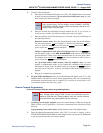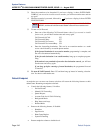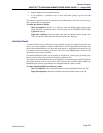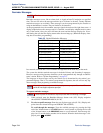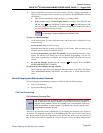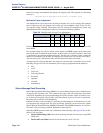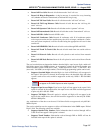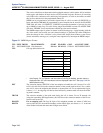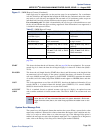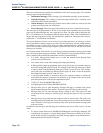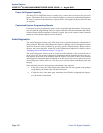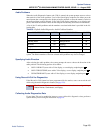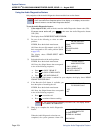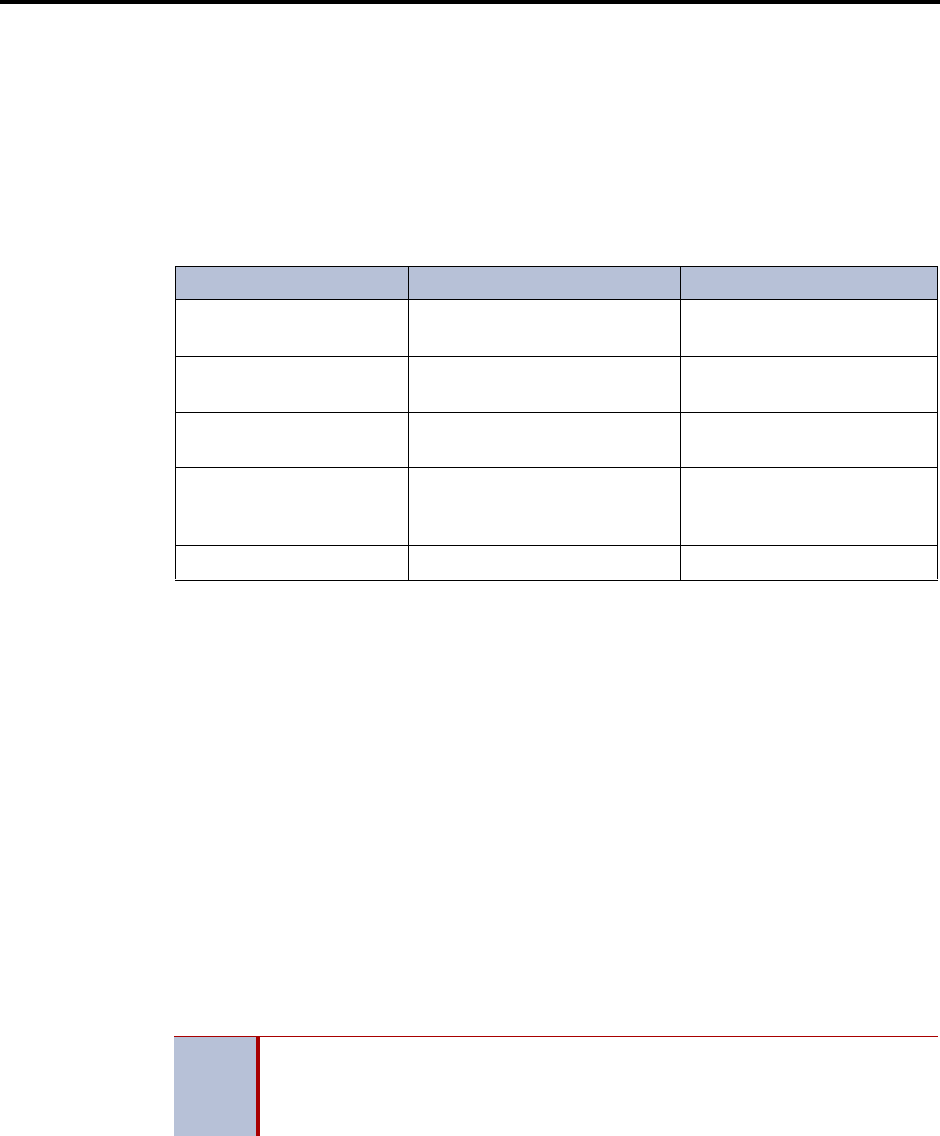
System Features
INTER-TEL
®
CS-5200/5400 ADMINISTRATOR GUIDE, ISSUE 1.1 – August 2005
System Error/Message Print
Page 249
Figure 11. SMDR Report Format (Continued)
Some digits may be suppressed (see the previous page for an explanation). For a conference
call, this field shows the endpoint that brought the trunk into the conference unless the confer-
ence ends as a call with only one endpoint and one trunk or if all conference parties are put on
individual hold (in which case the field shows the last party to handle the call).
For an incoming call: This field is determined by the service type of the trunk that was used
for the call and whether the digits are being suppressed. If the information is not suppressed, it
is included in the report as follows:
*Ring-in records appear only if ring-in diagnostic records are enabled as described on
page 246.
START This shows the time that the call became valid (see page 246 for an explanation). For an unan-
swered ring-in, it shows the time the call began ringing. It is shown in 24-hour time (00:00 -
23:59).
ELAPSED This shows the call length from the START time (above) until disconnect or the length of time
an unanswered call was ringing. If the option is enabled that shows call duration in seconds,
calls up to 999999 seconds long appears as S=XXXXXX (XXXXXX represents the number
of seconds) and calls lasting longer than 999999 seconds appear as HH:MM (hours and min-
utes).
COST This is the approximate cost of the call ($XX.XX), based on the database information. If cost
exceeds $99.99, it is printed without the decimal point ($XXXXX). If it exceeds $99999,
$$$$$$ is shown instead. If there is no cost, the field is blank.
ACCOUNT
CODE
This is a standard, forced, or optional account code (up to 16 digits). An optional account
code overrides standard or forced account codes. The field is blank if no account code was
used.
System Error/Message Print
The system has a self-diagnostic feature that monitors the system. When a system fault or other
noteworthy condition is detected, the software determines the impact of the condition and clas-
sifies it as a major or minor alarm or as other message type. If the Message Print option is
enabled, the messages are sent to the designated output port. For a complete list of Diagnostics
codes, refer to the Message Print Diagnostics Manual (part number 550.8018).
Table 37.
SMDR Report Format
SERVICE TYPE CALL RECORD SHOWS: RING-IN RECORD* SHOWS:
DID, DNIS, or *DNIS*
(not DISA ring-in)
Trunk DID or DNIS Informa-
tion
Ring... Trunk DID or DNIS
Information
DID, DNIS, or *DNIS*
with DISA ring-in
Blank if answered; DISA dig-
its if unanswered
DISA calls do not generate
a ring-in record
Caller ID, ANI, or *ANI* Outside Party ANI or Caller
ID
Ring...Outside Party ANI or
Caller ID
*ANI*DNIS* Outside Party ANI or Caller
ID and Trunk DID or DNIS
Information
Ring...Outside Party ANI or
Caller ID and Trunk DID or
DNIS Information
None Blank Blank
NOTE
If an asterisk (*) appears at the end of the record, as shown in the sample, it indi-
cates that the call was terminated because the system detected a disconnect
signal from the trunk (that is, the caller hung up before the station user on the
call).



